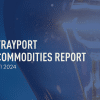Energy and commodity markets are constantly changing, and have recently experienced extreme fluctuations in price due to global gas shortages, post-lockdown industrial demand, and low wind generation in Europe.
For example, on 1st October, the November gas price at Dutch TTF hub hit an all-time high of 97.73 euros per megawatt-hour (MWh), up around 400% this year.
Whilst volatility is expected in energy trading markets, market participants such as utilities, industrial firms and trading houses increasingly face a higher frequency of extreme events. A recent Energies MDPI paper points out that “electricity prices are very volatile, they vary hourly, even minute by minute in some markets, due to constant changes in supply and demand, and they are affected by several parameters, e.g., weather, time of day, suspension of supply, maintenance […],”
How, then, can market participants realistically expect to keep up with this continued level of volatility on a minute-by-minute basis, which is the new reality they are faced with?
Structural Changes Affecting Energy and Commodity Trading
Of course, energy and commodity trading is continually evolving, and technological developments have a key role to play in this. There are several converging factors happening simultaneously within energy and commodity markets that businesses will need to address to be successful in the future:
Energy and Commodity Markets Are Becoming More Globally Interconnected
Trading hubs are increasingly correlated nowadays and progressively transforming from what used to be a collection of local trading hubs into more regional markets. Besides trading long-term contracts, according to the International Group of Liquified Natural Gas Importers, around 40% of global LNG volumes were traded on a spot or short-term basis in recent years
Market Volatility And The Need For Algos
Short-term and spot markets are more or less being traded in real-time, and more than ever, automation is key. Utilities, industrial firms and trading houses have subsequently been spinning up bigger intraday trading teams and advanced algorithmic models in order to help gain a competitive advantage;
Increased Competition
At the same time, energy and commodity trading has become much more competitive. More prominent industrial companies that purchase large volumes of power and gas are also setting up their own trading desks. In addition, new, independent companies are trading power and gas as a service for smaller-scale producers or buyers.
The Emergence Of New Commodities
Furthermore, the energy and broader environmental transition are giving rise to new commodities such as renewables guarantees of origin certificates or voluntary carbon markets. Initially bilateral traded, these commodities are expected to evolve into over-the-counter (OTC) trading markets with limited liquidity that require strong price risk management.
The Need For Direct Market Access Providers
Energy systems are shifting to a more decentralised landscape, with large-scale energy power plants being, more and more, replaced by small-scale renewable energy producers. Yet many smaller companies have less risk desire and capability to administer all related workflows and marketing activities; for example, exposure to power prices and the hedging of the asset in the long term. As a consequence, these companies are looking for partners who are providing such services. This is a massive opportunity for companies with a professional trading desk to scale their activities to offer market access services to third parties.
The Rise Of Data Analytics
The trading landscape is impacted by the use of analytic tools and market data in real-time, with organisations wanting to run their own models, algorithms and strategies to gain more insights and increase trading margins. In practice, advanced analytics, especially in volatile markets, can be a very effective tool to utilise additional analytics and systematic instruments to generate insights and spot trends, risks, and opportunities to enhance trading decisions.
Success Factors
It’s my belief that these structural changes will mean a change in the way market participants operate. In order to keep pace with the increased volatility of the energy commodity markets, it’s expected that we will continue to see a rapid rise in the use of data, as well as an increasing importance around the creation of bespoke applications and algorithms. Moreover, these markets will continue to be driven forward by further adjustments such as the leveraging of superior hosting, network services, as well as inclusive innovations of individual traders.
As a result, market participants should embrace new technologies that enhance the capabilities of their traders. By investing in resources that can power their business’s growth, firms can take advantage of the range of customisable and scalable solutions that meet their ever-evolving needs – which could be the differentiating factor for success. Taking decisive action now to put the building blocks in place will maximise a company’s ability to be resilient and flexible in changing market conditions.



